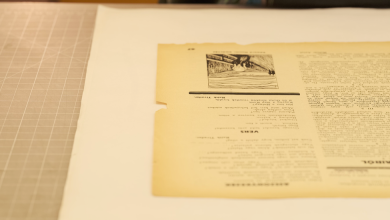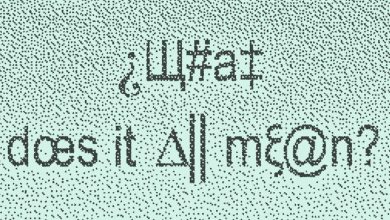Are Children the Future? In This Novel, the Answer Is Complicated.

ANTHEM
By Noah Hawley
How do we bring children up in today’s increasingly dangerous and divided world? Will they rise? Or will they fall? With the recent rash of articles about the fragility of adolescent mental health and America’s uptick in teenage suicide rates, these questions are urgent. In his sixth novel, “Anthem,” Noah Hawley taps into our existential anxiety — and transforms it into a hefty page-turner that’s equal parts horrific, catastrophic and, at times, strangely entertaining.
The book opens with a daughter: In the prologue, set in the financially precarious year of 2009, 9-year-old Story Burr-Nadir sings a stirring rendition of the national anthem during a school recital in Brooklyn. Story’s mother, Margot Nadir, glows with admiration in the crowded audience. Her second husband, Remy Burr, sits with her, and their infant son dozes in a nearby carrier. Margot, who is white, and Remy, who is Black, are members of the “party of Lincoln,” conservative: “Opportunity, wealth, prestige,” Hawley writes of Remy, “these were his ideals.” Margot — or Judge Nadir — was appointed to the federal bench the year before. Hawley writes: “As if this moment — in which her daughter has decided to give voice to the war-torn hopes of a new nation — combined with the surprise of hearing her sing it for the first time, has created a synchronicity of deep spiritual meaning. It is not a voluntary feeling. Not an intellectual choice. The judge spends her days sitting on a dais before an American flag. She herself is an American institution — Her Honor — steeped in the power and history of symbols.”
Then the narrative leaps to several years after the Covid pandemic. Teenagers are committing suicide at a fierce rate. It starts with 16-year-old Brad Carpenter of Madison, Wis. Thousands follow. An enigmatic symbol — A11 — appears in the vicinity of each death. “An act of collective surrender,” Hawley writes. “It felt to many of us as if the species itself was giving up. We took to sleeping in bed with our grown children, watching their chest rise and fall, listening for their breath, as if they were babies once more.”
The performative suicide of Claire Oliver becomes the tripwire that propels this frantic narrative forward: The 17-year-old daughter of the chief executive of Rise Pharmaceuticals is found by her younger brother, Simon, in their parents’ opulent bathroom after overdosing on pills sold by her father’s multinational conglomerate. Like a flamboyant Chelsea art installation, the room is wallpapered in “small foil packets of oxycodone.” It’s a gruesome, startling scene. “His sister sat slumped in the center of the room, a marionette in white with her strings cut,” Hawley writes. “All around her, dozens of red eyes glared down on Simon, unblinking, like the eyes of the damned.”
Shellshocked Simon is shipped off to a psychiatric facility for children of the wealthy called the Float Anxiety Abatement Center. Here, Simon — still traumatized and heavily medicated — meets Louise Conklin (15, “with no eyebrows”) and a boy called the Prophet, as well as other ragtag teenagers who are unsure if they’re tipping toward living or dying. As his name suggests, the Prophet hears from God, and God has chosen Simon as the leader of their makeshift group.
Within days, the band of adolescents breaks out of the rehab-like facility in the suburbs of Chicago and begins its mission, traveling to Springfield, Mo., to West Texas, then to Palm Springs, Calif. At the same time, multiple plotlines gallop through Hawley’s narrative: Margot Nadir is being considered for the United States Supreme Court. Story, now 22, has gone missing. The reader learns about a malevolent Jeffrey Epstein-like character named the Wizard (or E. L. Mobley), a sex addict who kidnaps adolescents and impregnates them, and the Troll, Evan Himelman, who collects victims for his boss. One of the impregnated girls, Bathsheba DeWitt (or Katie), becomes part of the Prophet’s mission, with the goal of with the goal of setting her free from Mobley’s compound in West Texas.
Hawley’s fantasy thriller largely follows this unlikely band of teenagers who are out to save themselves and others from the prevailing forces of evil. The off-the-rails world of “Anthem” will certainly be recognizable to readers — from the vigilante warfare on the streets to the life-threatening environmental calamities occurring on a frequent basis to the troubling tectonics of the U.S. political landscape. A large cast of heroes and villains populate the narrative (to the point where it can be difficult to keep everyone straight). Given the number of characters, only a handful of interior lives — namely Simon Oliver’s and Louise Conklin’s — are developed with any nuance or complexity.
With the mission to save the impregnated Bathsheba from the Wizard, I was reminded of “Mad Max: Fury Road.” Similar to that iconic George Miller film, Hawley’s novel is a vengeance story that hurtles at an accelerated velocity. (This isn’t too surprising, given the author’s successful career in television: Hawley has garnered multiple top awards for his popular series “Fargo” and will be the showrunner for a TV series based on the “Alien” movies, to debut in 2023.) Despite the breakneck speed of the narrative, there is an episodic rhythm to the pacing; one catastrophe piles on top of the other. Speaking to Hawley’s talents as a screenwriter, his dialogue brings the characters alive. Again and again, the exchanges are humorous, sad and revealing. “Fly, you fool,” Louise says to Simon as they flee the Float center together.
In a metafictional nod to the dark satires of Kurt Vonnegut, Hawley intrudes at several points throughout the book — for example: “First of all, your author would like to apologize for the world he has created. He knows it is ridiculous. The fact that the world he lives in is also ridiculous is no excuse. The author’s job is to make sense of the senseless.” It’s interesting to have Hawley admit his novel’s shortcomings halfway through the text. On one hand, I appreciated the way he pauses the frenetic pace of the novel to contextualize his vision and intentions. On the other, these sections often read like an extended op-ed about the author’s views on the broken state of our nation.
That said, this literary mechanism succeeds at unexpected moments. This story that begins with a fictional daughter ends with a real-life one. During the novel’s final pages, Hawley talks about his own teenager and her ongoing struggles with anxiety. When he asks her what she is afraid of, this is her response: “She didn’t want to grow up. She didn’t want to think about the future.” Hawley goes on:“I tried to convince her that planning for the future is the only way she’ll have any control over it, but she was skeptical. We were in the middle of a global pandemic, after all. Control, she had learned, is an illusion.”
This tender, complicated reflection led me to believe that “Anthem” is about a different kind of song — an extended aria for Hawley’s daughter, charged with considerable anger and despair about our chaotic world. Hawley’s concerns as a father ground this plump, pyrotechnic novel, giving its dramatic violence and outcome more depth and meaning.
Instead of making the teenagers victims, Hawley gives them agency and power in a collapsing world. Young people rise up, and many doomed adults are left behind, in a paradigm reminiscent of Lydia Millet’s “A Children’s Bible,” in which 12 teenagers attempt to survive a climate-change apocalypse. Admittedly, these two prophetic novels are wildly different in voice, style, pacing and length. But at the conclusion of each, we’re left with the inevitable question: Will the children save us? In “Anthem,” Hawley leaves this answer up to the reader.




